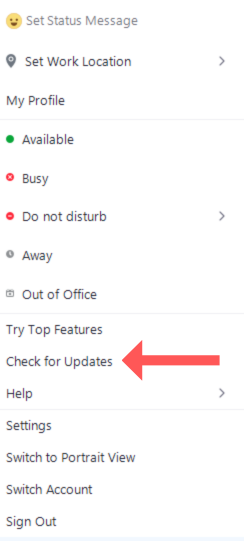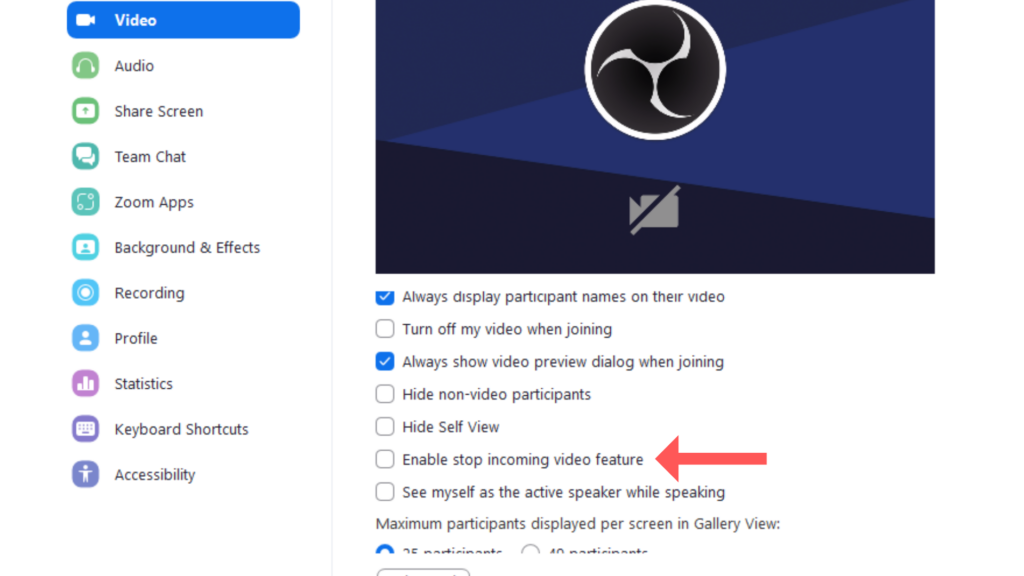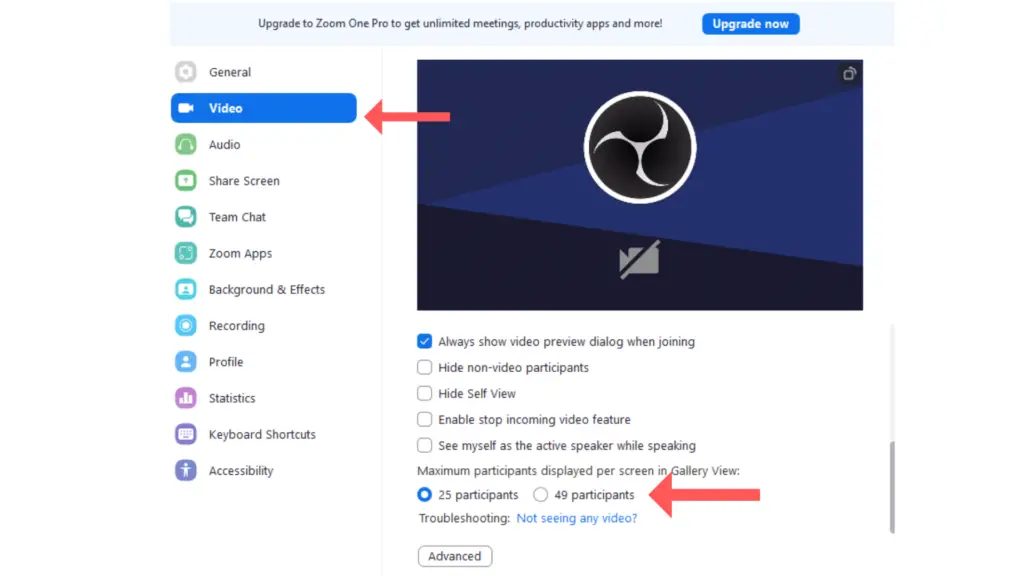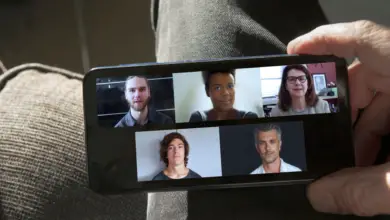Why Can’t I See Anyone on Zoom?

One common issue that Zoom users often encounter is not being able to see other participants in a meeting.
In this guide, we aim to unravel the reasons behind this issue and provide comprehensive solutions to help you navigate and resolve these Zoom visibility issues effectively. Whether it’s due to outdated software, incorrect settings, or device limitations, we’ve got you covered.
Resolving Zoom Video Issues by Updating Software and Checking Settings
The first step to take is to ensure your Zoom application is up to date. Developers consistently release new versions with improved functionality, enhanced security, and bug fixes. Regular updates not only enhance the overall functionality and security of Zoom but can also rectify problems like video visibility issues.
Here’s how to update your Zoom application:
On a Computer (Windows/Mac):
- Launch the Zoom application on your device.
- Click on your profile picture located in the top right corner.
- Choose ‘Check for Updates’ from the drop-down menu. a prompt will appear to guide you through the update process. If an update is available,

On a Mobile Device (iOS/Android):
- Go to your device’s app store (Apple Store for iOS, Google Play Store for Android).
- Type ‘Zoom’ in the search bar.
- If an update is available, the ‘Update’ button will be visible. Tap on it to start updating your Zoom application.
Check Your Video Settings
If your Zoom software is up to date and you’re still having issues, it could be due to the “Stop Incoming Video” feature being enabled.
To check this, open your Zoom application and navigate to the Video settings. Look for the “Stop Incoming Video” option. If it’s enabled, deselect it.

If you follow these steps and are still having trouble seeing other participants, there might be other factors at play, such as internet connectivity issues or problems with your device’s camera. However, updating your software and checking your settings is a good first step in troubleshooting video issues in Zoom.
Enabling Gallery View to See All Participants
If you’re in a larger meeting and can see some but not all participants, it’s likely because your “Maximum participants displayed per screen” setting is limited. By default, this might be set to 25 participants. If your system meets the necessary requirements, you can increase this to show up to 49 participants at once. Here’s how to adjust this setting:
1. Open Zoom Desktop Client: Start by opening the Zoom application on your PC or Mac.
2. Access Zoom Settings: Click on the ‘Settings’ icon, typically located in the top right corner of the Zoom home page.
3. Select Video Settings: In the Settings window, click on ‘Video’ in the left sidebar.
4. Set Maximum Participants: Now, under ‘Maximum participants displayed per screen in Gallery View:’, select ’49 Participants’. If this option isn’t available, it means your device doesn’t meet the minimum system requirements for this feature.

5. Close Settings and Join a Meeting: After you’ve adjusted the settings, close the window and join a Zoom meeting.
6. Enable Gallery View: Once you’re in a meeting, click “Gallery View” in the top-right corner to see the gallery view of your participants. You should now be able to see up to 49 participants at a time.
7. Scroll Through Participants: If there are more than 49 participants, click the right arrow button to scroll through the video feeds and see more participants.
This process should help you see all the participants in your Zoom meeting. If you’re still having trouble, it might be worth checking Zoom’s support resources or reaching out to their support team.
Solution for Camera Issues Due to Overloaded System
If you’re still experiencing issues, they might be caused by outdated drivers, an overworked processor, or low available memory. Here’s how you can address these issues:
1. Limit Your CPU Usage: If your processor (CPU) is overworked due to running too many applications at once, it might affect Zoom’s performance. To ensure that your CPU isn’t overloaded, close any unnecessary applications before joining a Zoom meeting. This can typically be done through your device’s task manager.
2. Free Up RAM: Your device’s available memory (RAM) can also affect Zoom’s performance. If your RAM is nearly full, it could cause your device to slow down. Try closing any applications you don’t need during the Zoom call to free up some RAM.
3. Limit Internet Usage: If multiple applications are accessing the internet simultaneously, they could be using up a significant portion of your bandwidth, leaving little for Zoom. To address this issue, try to limit internet usage on your device as much as possible during the Zoom call. This could mean closing browser tabs, pausing any downloads or updates, or disconnecting other devices from your network.
4. Update Your Drivers: The drivers in your system are crucial for operating internal components, including your camera. If these drivers are outdated or corrupted, they may cause problems. To resolve this, you should regularly update your drivers. This process will vary depending on your operating system and device, but generally, you can find driver updates in your system’s device manager or settings.
Following these steps should help improve your device’s performance during a Zoom call, leading to fewer camera issues and a smoother meeting experience.





